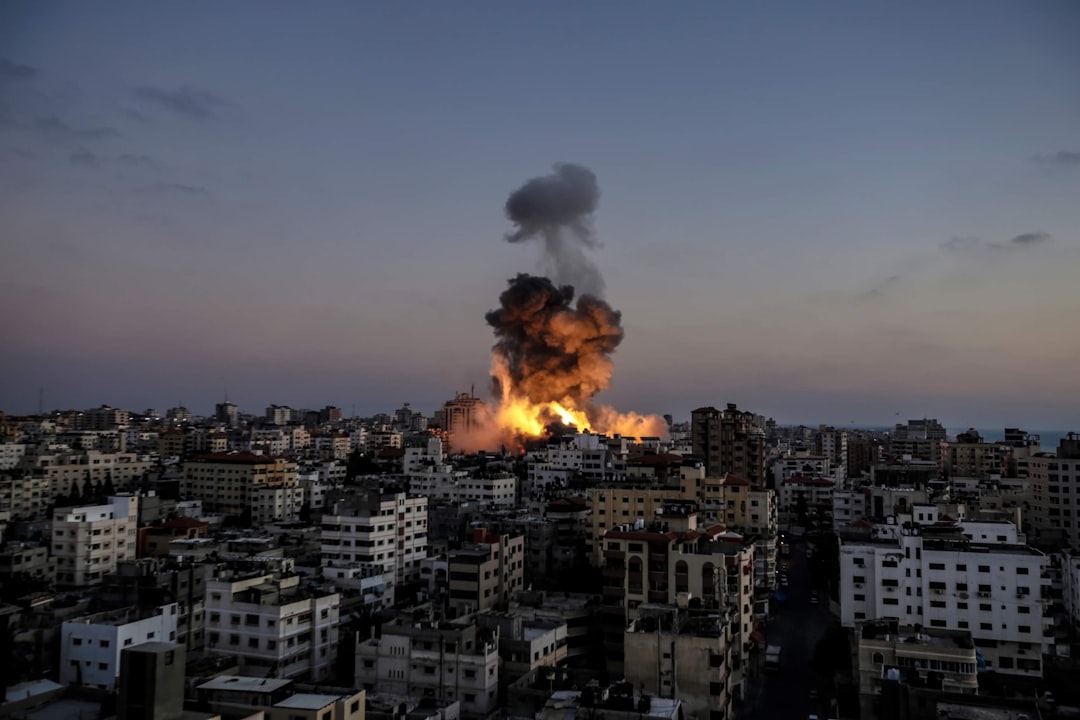A Sudden Spark of Optimism (image credits: Unsplash)
Gaza – In the dim twilight, flashes pierced the horizon, a stark reminder that peace agreements don’t always silence the chaos overnight.
A Sudden Spark of Optimism
Imagine the relief washing over families after months of unrelenting tension—then the boom that snaps everyone back to reality. That’s Gaza right now, where news of a breakthrough ceasefire deal collided head-on with fresh explosions. President Trump’s announcement of the first phase agreement between Israel and Hamas has everyone holding their breath, wondering if this is the turning point or just another false dawn.
The deal, hammered out in Egypt’s Sharm el-Sheikh, promises an end to the fighting that’s ravaged the region. But as details emerge, the blasts from southern Israel serve as a grim underscore, highlighting how fragile these moments can be.
Unpacking the Ceasefire Blueprint
At its core, this agreement outlines a phased approach to de-escalation, starting with a complete halt to hostilities. Israel has signaled its cabinet will vote on it soon, potentially kicking off the ceasefire within 24 hours. Hamas, for its part, has nodded to releasing hostages in stages, tied to Israel’s military pullback.
Key elements include gradual IDF withdrawal from parts of Gaza and a surge in humanitarian aid—up to 600 trucks daily. It’s the first real progress under Trump’s 20-point plan, aimed at wrapping up a war that’s dragged on far too long. Yet, the explosions suggest not everyone’s on board yet.
The Explosions: Timing That Stings
Hours after the deal’s reveal, reports of blasts echoed across Gaza, visible from southern Israel. Witnesses described the night sky lighting up, a jarring contrast to the hopeful headlines. These incidents, amid ongoing military operations, raise tough questions about enforcement before the ink even dries.
Experts point to possible preemptive strikes or rogue actions, but the optics are brutal. Sky News and Al Jazeera correspondents on the ground captured the dissonance—celebratory murmurs drowned out by the rumble of uncertainty.
Trump’s Role in the Spotlight
President Trump didn’t mince words, calling it a “breakthrough” and hinting at a Middle East trip to seal the momentum. His involvement adds a layer of U.S. muscle to the talks, blending diplomacy with the weight of American influence. For many, it’s a bold move in a conflict that’s resisted outsiders for years.
Critics, though, worry about the pace. With hostages still in peril and aid corridors just opening, the pressure’s on to deliver. Trump’s plan emphasizes swift hostage releases, but the explosions underscore the risks of moving too fast—or not fast enough.
Reactions Pouring In from Around the Globe
World leaders are buzzing. The BBC notes cautious optimism from European allies, while ABC News highlights Trump’s push for broader regional stability. In the Arab world, mediators like Qatar and Egypt are hailed for bridging the divide, but calls for guarantees grow louder.
On social media, posts from X reflect the split—some cheer the 33 hostages set for release, others decry the continued bombings. It’s a mix of guarded hope and sharp skepticism, mirroring the ground reality in Gaza.
Hostages and Humanitarian Hopes
For the families waiting, this deal dangles real promise. Hamas agrees to free around 33 Israelis initially, in exchange for Palestinian prisoners—30 per civilian hostage, per some reports. It’s a human exchange at the heart of the talks, one that could save lives if it holds.
Humanitarian groups are gearing up, with plans for massive aid influxes to rebuild what’s been shattered. But those explosions? They remind us that trust is earned one quiet day at a time.
Navigating the Road Ahead
Looking forward, the full 20-point framework looms large, covering everything from demilitarization to reconstruction. Israel’s interception of aid flotillas adds tension, but the core pact focuses on de-escalation. If ratified tonight, we could see trucks rolling in by dawn.
Still, history’s littered with broken truces. The real test? Turning words into weeks of silence.
Key Takeaways
- Ceasefire could start within 24 hours, with phased hostage releases and IDF withdrawal.
- Explosions highlight enforcement challenges, even as aid ramps up to 600 trucks daily.
- Trump’s plan eyes a broader end to the war, but fragile trust remains the biggest hurdle.
In the end, this moment in Gaza teeters between breakthrough and breakdown—a reminder that peace isn’t just announced, it’s built. What do you make of these developments? Share your thoughts in the comments below.








